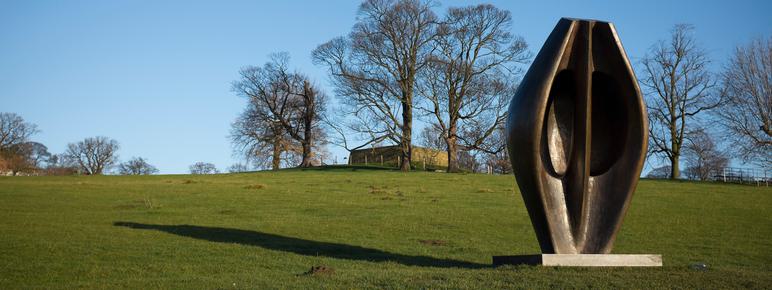
Henry Moore: Large Totem Head
Art Outdoors /Henry Moore: Large Totem Head
This sculpture is enlarged from a much smaller work made five years previously called Head: Boat Form and the resemblance to a hollowed-out boat remains clear. However, unlike that sculpture, which sat horizontally, Large Totem Head is raised to a standing form, assuming the totem-like presence of its title.
Moore was inspired by a variety of natural objects which he collected and surrounded himself with in his studio. He was also fascinated by the art of many cultures and regularly visited the ethnographic collections at the British Museum. The influence of both areas of interest can be seen in Large Totem Head.
From the back, the convex form seems entirely closed and abstract, like an outer skin. Moving to the front, the concave interior resembles a seed pod, fruit or bud that has been cut in half to reveal its hidden core. When seen among the hills and trees of the Country Park the relationship to natural forms such as this becomes more resonant.



You might also like
- Art Outdoors

Jonathan Borofsky: Molecule Man 1+1+1
- Art Outdoors

James Turrell: Deer Shelter Skyspace
The Deer Shelter Skyspace creates a place of contemplation and revelation, harnessing the changing light of the Yorkshire sky. It allows us to take time to sit, to think, and to contemplate; an open invitation to access a peacefulness that is often denied in our busy lives that abound with technology and speed. - Art Outdoors

Henry Moore: Upright Motives No. 1 (Glenkiln Cross): No 2; No 7
Moore created twelve Upright Motives in the mid 1950s. In their powerful symbolism these pieces owe much to the tall, upright stones, known as menhirs, from prehistoric times. Moore brought all these influences together to create forms which are unmistakably his own. - News

YSP recognised as ‘gold’ winners in Visit England Awards
26 October 2022